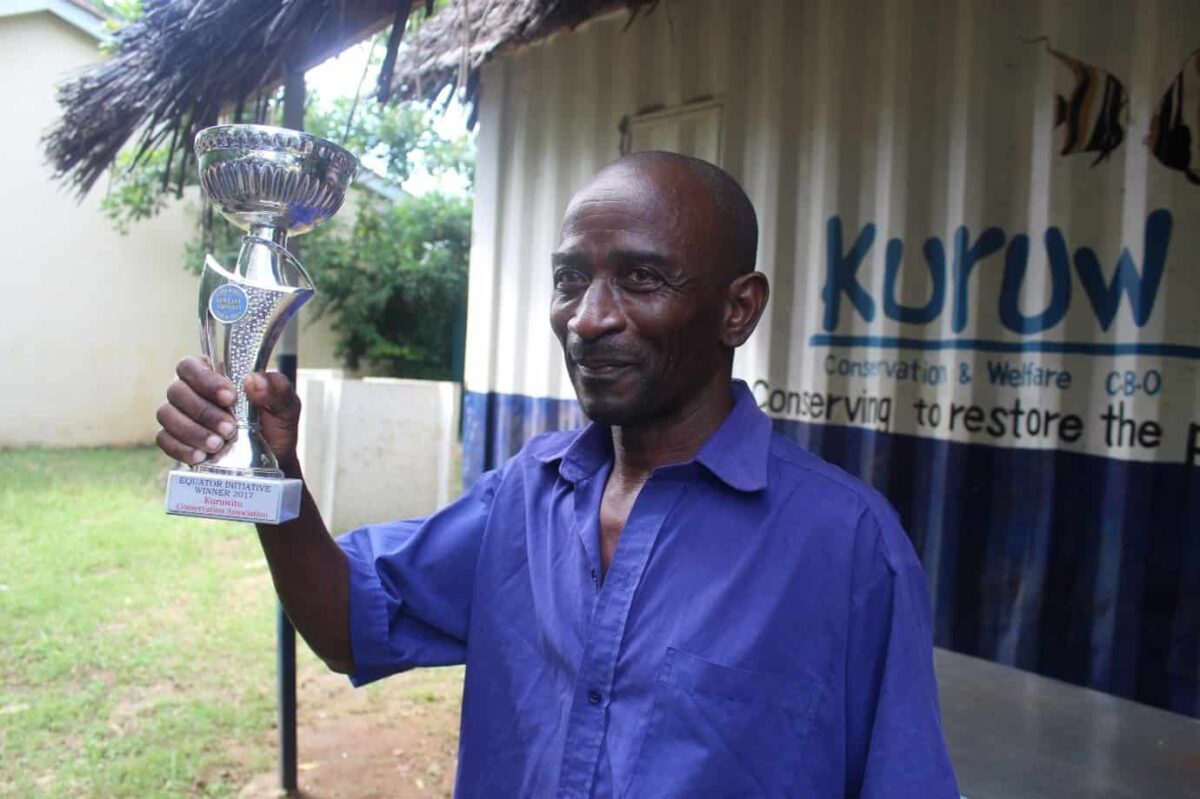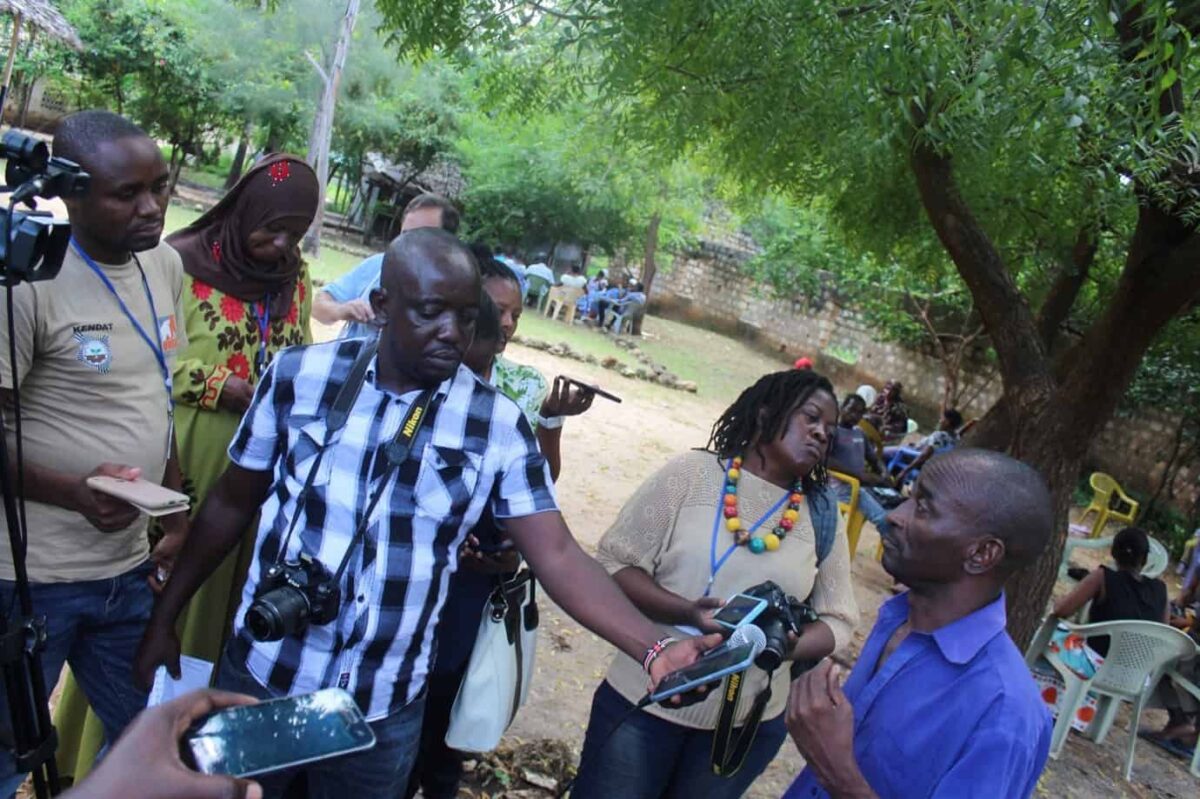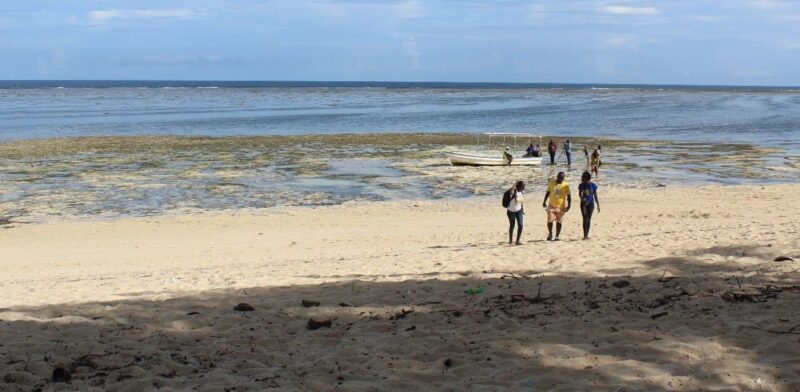By Kiundu Waweru
It was a hot and humid Tuesday afternoon when the bus slowly pulled out of the hotel and took the Mombasa Malindi Road towards Mtwapa. The passengers immediately took out their phones – not to surf the web or call home, but to snap photos of the beautiful coastal scenery.
The passengers were all journalists, and they were excited to be on the road after two days in a hotel conference room. They had flown in Sunday night – three from Uganda, two from Tanzania, and one from Rwanda – to join 11 colleagues from Kenya at the Earth Journalism Network’s first workshop on wildlife and conservation journalism in East Africa.
The bus eventually arrived at its destination, the Kuruwitu Conservation and Welfare Association Centre, a nondescript shipping container turned into offices. Several community groups were meeting under the generous shade of sprawling trees that lined the compound.
The journalists immediately scattered to conduct interviews. It took effort to bring them back to the business that had brought us here: Hearing how Kuruwitu Project Manager Mzee Dickson Gereza and his team had rescued a dying coral reef and the marine life that relied on it.
Days like this are common at EJN workshops. This one, which took place in Mombasa in 2019, is part of EJN’s two-year project in East Africa, funded by USAID/DOI, which aims to increase the quality and quantity of journalism about conservation and illegal wildlife trade issues across Uganda, Tanzania, Rwanda and Kenya.
In the last two years, EJN has trained 29 journalists in workshops, issued 26 story grants, and hosted over 400 journalists virtually for webinars on investigative journalism and other conservation topics. Overall, the project has produced at least 80 stories and worked with countless journalists and media organizations in the region.
Participating journalists publish stories after the workshops, using material and skills they learned during workshop field visits and training sessions. The conversation the journalists are about to have with Gereza is just one of the many interviews they will later use in dozens of stories.
As the journalists gather, Gereza explains how fishers in Kuruwitu began noticing a steady decline in their daily fish catch in the early 2000s. This not only led to reduced income for the fishing community but was also a recipe for conflicts and marine degradation.
“We would go further and further into the ocean, casting nets made to capture even the smallest of fish. But they mostly returned empty,” he said.

Instead of conflict, however, the community came together and deliberated on what action to take. This led to the birth of the Kuruwitu Conservation and Welfare Association in 2005, which today has over 200 members. Fishing within 30 hectares of the reef is banned, as is the harvest of ornamental corals. The members police themselves, taking turns patrolling the beach.
Within a decade, the results were visible at Kuruwitu Beach, now declared a Marine Protected Area. Data from the World Conservation Society show that the fish population is back with a bang, with fish biomass estimated to have increased by as much as 400 percent.

Kuruwitu’s neighbors noticed these results and established conservation organizations as well. Nearby Beach Management Units have visited for lessons in how to conserve marine resources and are incorporating similar policies on their coasts.
“It has been won through hard work, support from different people and organizations and most importantly, commitment from the people of Kuruwitu. We guard this marine park with all we’ve got.”
—Kuruwitu Project Manager Mzee Dickson Gereza
As Gereza tells the story, the journalists scribble furiously and take endless pictures. Two of those journalists, Daniel Wagema and Faiza Abdalla, later published stories about Kuruwitu and the lessons learned from its successful conservation.
Wagema, who wrote a story about fishers in Kuruwitu benefitting from the blue economy, won first place in the print category and second overall in the African Climate Change and Environment Report Awards (ACCER), organized by the Pan African Climate Justice Alliance.
Abdalla took home first place in the radio category and third runner-up overall at the Green Innovation Awards, organized by the National Environment Trust Fund. The radio segment, which aired in Swahili, looked at the importance of seagrass. As the day ends, the journalists head down to Kuruwitu Beach to conduct more interviews and enjoy the landscape. The workshop may be almost over, but their work as environmental journalists is just beginning.
